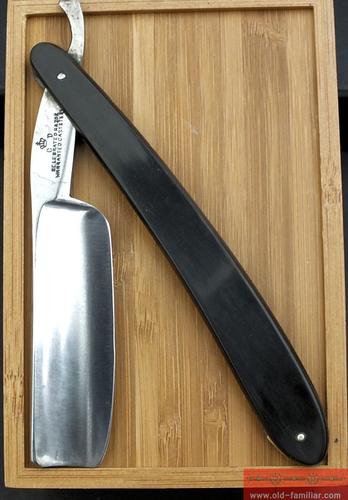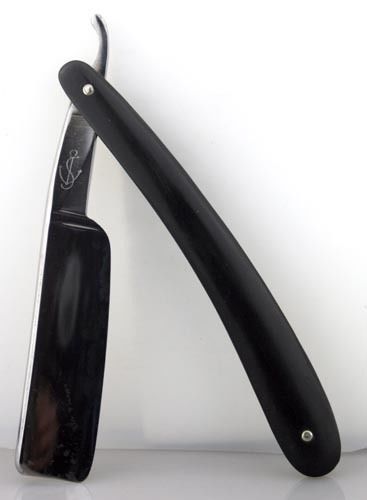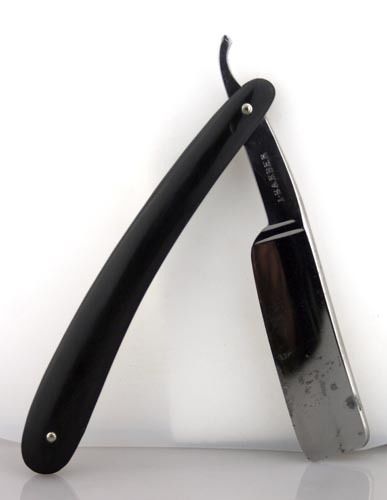Results 51 to 60 of 69
Thread: Sheffield steel superiority
-
09-25-2016, 05:59 PM #51Senior Member



- Join Date
- Mar 2012
- Location
- Thunder Bay, Ontario, Canada
- Posts
- 17,334
Thanked: 3228
If you have the testing done my bet is it will reveal nothing startling and possibly be a bit underwhelming compared to more modern carbon steel alloys. One thing for sure, it will be interesting to see.
BobLife is a terminal illness in the end
-
09-25-2016, 06:06 PM #52

Well, there's simply no arguing with the example you just posted, but that pretty much sums it up....
The level of purity or impurity of the ore, what is was melted down in and what that imparted to the steel, and all the other aspects to that time are what is unique IMO.
I have several what turned out to be "cast" steel razors, vintage razors for sure, but even the feel of that steel is much different, and in my opinion inferior.
Here are two that were "cast", or cast steel (if my terminology is correct), for their size, I'd say they weigh half of what a typical 8/8+ Sheffield weighs. The steel feels completely different, but they were relatively easy to hone, and surprisingly gave an excellent shave...for the longest time I thought they made of tin, certainly feels like shaving with something made from a soda can....
First a Krone 98 Celebrated:

And this undoubtedly counterfeit of a J.Barber, this I.Barber "Fouled Anchor" razor:


-
09-25-2016, 06:41 PM #53

Not sure which Mary you're thinking of Phrank - but Bloody Mary was Henry XIII's daughter and became Queen after the deaths of her brother - the 'Bloody' was attached to her because of all the people who were burned at the stake during her comparatively short reign (she, like her mother, was Catholic and passionately against the reforms that were introduced by her father). In any event her death was from natural causes - maybe you are thinking of Mary Queen of Scots - Queen Elizabeth's cousin - who was beheaded for plotting against Elizabeth.
My service is good, fast and cheap. Select any two and discount the third.
-
The Following User Says Thank You to UKRob For This Useful Post:
Phrank (09-25-2016)
-
09-25-2016, 07:02 PM #54MEMBER


- Join Date
- Apr 2015
- Location
- VERO BEACH, FL
- Posts
- 903
Thanked: 96
When I got my Sheffield 2 weeks ago, I just couldn't put my finger on what it compared with. I then took out a couple of my 100 year old Genco's and saw a very similar performance in smoothness and and the edge. Something about the old steel and grinding techniques I guess. I also have a couple of new Mastro Livi's that perform the same way.
-
09-25-2016, 08:14 PM #55
-
09-25-2016, 09:20 PM #56Str8Faced Gent.






- Join Date
- Aug 2013
- Location
- Orangeville, Ontario
- Posts
- 8,463
- Blog Entries
- 1
Thanked: 4207
AKmik, I love that wrench razor!
I may need to try to make one someday.
Metric from Germany in a hollow ground, and maybe a good ole snap on wedge..
Great read this thread is.."Depression is just anger,, without the enthusiasm."
Steven Wright
https://mobro.co/michaelbolton65?mc=5
-
09-25-2016, 09:56 PM #57Previously lost, now "Pasturized"


- Join Date
- Oct 2005
- Location
- Winnipeg Manitoba Canada
- Posts
- 1,333
Thanked: 351
Unfortunately, even the recipe would not guarantee the the same results. There are still a huge amount of variables.
It's not *just* the ingredients, it is how you handle them. Grinding a piece of tool steel will produce a different result than first forging it. In the 1800s forging would depend on the skill of the smith, how quickly, how many strikes of the hammer, the coal in the forge used for heating, exactly at what temperature was the blank pulled out of the forge.. Just heat treating is a small part of the whole process. Today we heat soak, cryogenic treat etc.... but in the 1800s there was no such thing, not even accurate thermometers for those temperatures... just the seat of the pants of the workmen and their experience.
Going back to Grandma and her apple pie... What apples, how ripe, who's butter, how well dried was it... how much salt in the butter, or perhaps there was none at all... How were the apples cut, thickness etc. and then there's the flour, how damp was it, how finely milled, did the mill that made the flour include any extra ingredients, was it stone ground or some other method, how was the dough handled, we know less is more, but depending on the temperature, humidity, weather and time of the day, they can all influence how you handle the dough that particular time/day. ( I won't even go to the fact that finding those ingredients, made the same way, would be almost impossible to find today... even Apple orchards and the apples they grow have changed significantly in the past 60 years).
Someone brought up poor quality steel... it probably had the right mix of ingredients, but the foundry was careless in how they handled it, or perhaps they did not have the right knowledge to produce that grade of steel, and ended up with microscopic air bubbles, then again, sometimes it's not even about the knowledge, but rather it's being produced to a price point. If you don't want to pay for quality, you don't get it. I remember when they began to copy US made woodworking machinery in the far East. It was terrible quality as some workers simply took apart US made machines and used those parts to make molds, not worrying (or perhaps even knowing) about the fact that cast iron shrinks and you need to make your molds slightly larger to accommodate that fact. Later, the same companies, now having learned how to do things properly, began to complain that the buyers would not pay for the extra work required to make a quality product... The buyers wanted the cheap stuff because they could make a better profit.
I do get a bit cranky when I'm told "our products only use virgin steel".... Sorry, but iron oxide dug out of the ground is NOT virgin steel. It's what you do with your ingredients that matters... if you start with old cars, it's a lot cleaner than ore.... but if you just melt them down without doing the rest of the work, you'll end up with a poor product, just as you would if you started from plain ore which is also full of contaminates.
So, I don't think it's a magical ingredient (one rusty old razor would give you all the information required if analyzed in a modern foundry's lab), I just think the workers of the day took pride in their skills and they just did the best they knew how at the time.
Regards
Christian"Aw nuts, now I can't remember what I forgot!" --- Kaptain "Champion of lost causes" Zero
-
-
09-25-2016, 10:16 PM #58

Mike,
Thats a random pic I grabbed not mine , I got a chuckle when Phrank said wrench and I just knew someone had to have done it. I have seen a bunch of knives made from wrenches, and I think Snapon has a steak knife set.
If you do make one read up a little, I think I remember something about highly toxic fumes released by grinding/heating the chrome coating on the wrenches. Or something along those lines.
-
The Following User Says Thank You to AKmik For This Useful Post:
MikeB52 (09-25-2016)
-
09-26-2016, 02:50 AM #59

I would love to see the results of that steel test! I have gotten great shaves from Razors made in many countries, but the Sheffield blades are consistently great

-
09-26-2016, 04:39 AM #60

Pretty much what I said earlier. I agree on the craftsmanship aspect.
My point was once we KNOW what the steel is, and know what its modern equivalent is, we would have a starting point. that's all the testing would do.
Getting similar end results with that steel will definitely take work, but it is far from impossible in my mind. Absolutely there are 1000 variables in the production process, forging, stock removal, heat treat , temper ect... But what's in the steel is what's in the steel and that won't change.
I just want to know what modern blade steel most closely matches the stock that those old craftsman at W&B pulled from the rack. I think there are plenty of skilled blade smiths out there that can take that steel with some trial and error and reproduce the same quality of days gone bye.
I agree with BobH,
That the steel will likely be underwhelming by todays standards.


 90Likes
90Likes LinkBack URL
LinkBack URL About LinkBacks
About LinkBacks






 Reply With Quote
Reply With Quote
 hahaa
hahaa 

